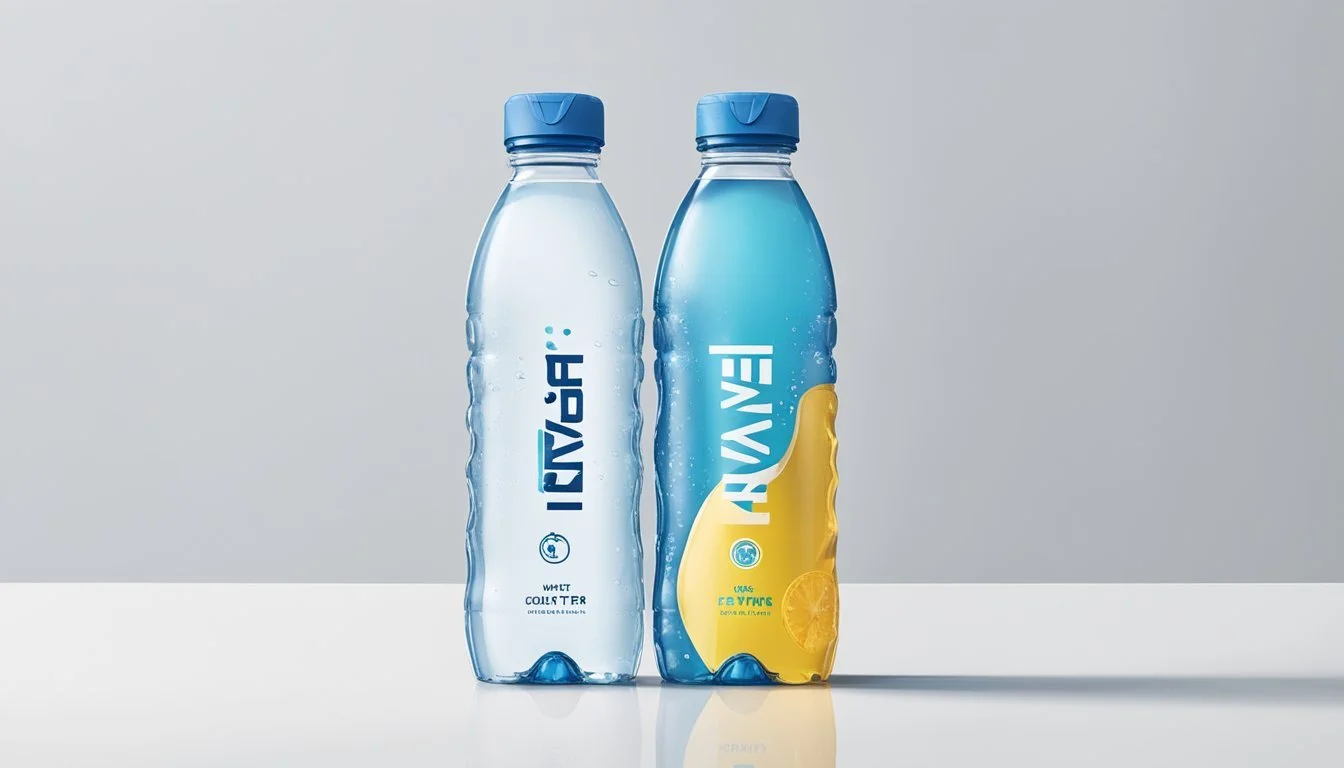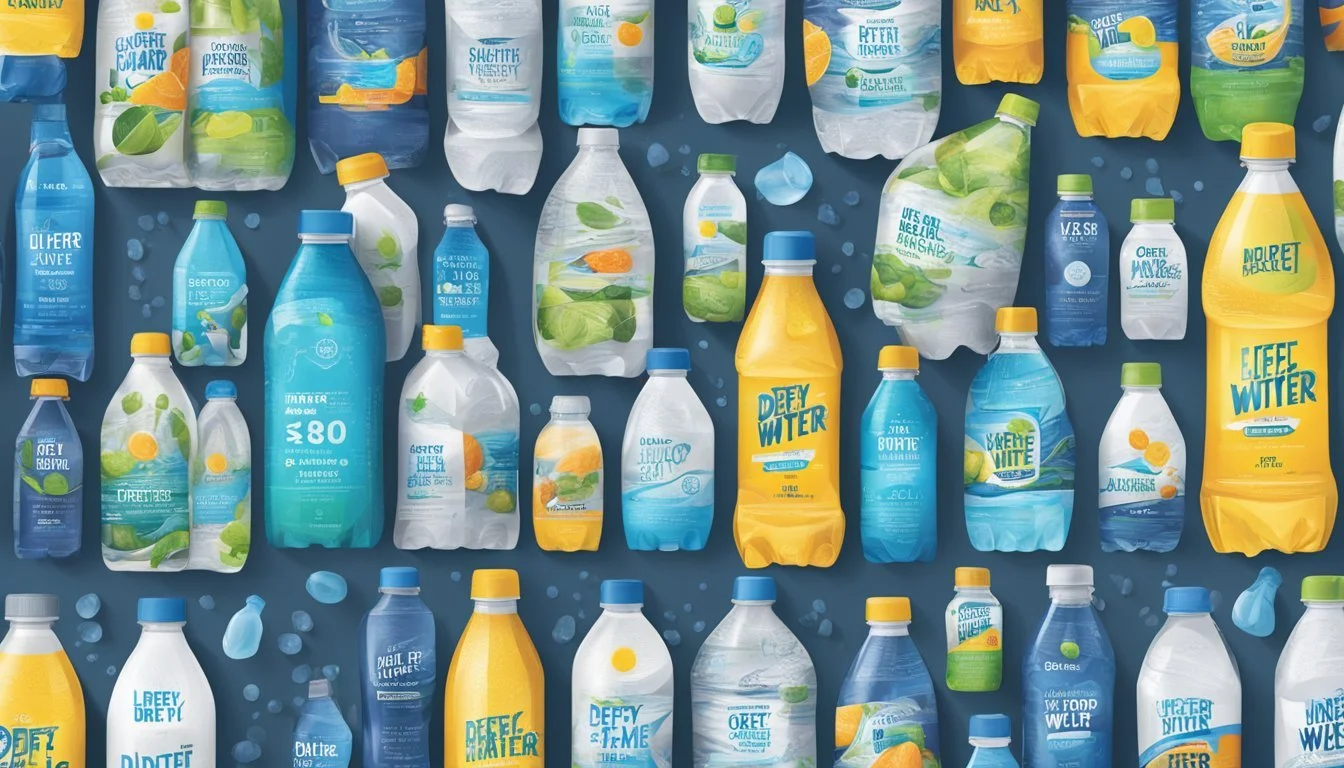LIFEWTR vs. Defy
Comparing Bottled Water Brands for Quality
When it comes to premium bottled water, consumers often find themselves choosing between LIFEWTR and Defy. Both brands offer unique selling points and cater to different preferences. While LIFEWTR focuses on delivering a pH-balanced hydration experience with an emphasis on creativity and art, Defy touts its alkaline properties and added benefits geared towards enhancing physical performance.
For those seeking a balanced pH level coupled with an aesthetically pleasing bottle, LIFEWTR stands as a strong contender. On the other hand, individuals looking for alkaline water that could potentially aid in quicker recovery and hydration during intense activities might find Defy to be the better option.
Evaluating factors like taste, pH levels, and targeted benefits can help determine which bottled water aligns best with personal needs. Stay tuned as we dive deeper into the characteristics and user feedback for both brands.
Overview of Bottled Water
Bottled water is a popular choice for hydration due to its convenience and variety. There are numerous water brands available, each offering distinct properties and taste profiles.
Bottled waters can be broadly categorized into purified water, spring water, and distilled water.
Purified water undergoes processes like reverse osmosis, distillation, or deionization to remove impurities. Common brands include Aquafina and Dasani.
Spring water is sourced from natural springs and retains minerals found in the source water. Brands like Evian and Fiji Water fall into this category.
Distilled water is created through distillation, removing all minerals and impurities, often recommended for applications where mineral content is undesirable.
Tap water is municipal water that is treated to make it safe for consumption but may contain varying levels of minerals and additives like chlorine.
Premium brands like SmartWater also offer enhanced products with added electrolytes for taste and hydration benefits.
The bottled water market provides options for different preferences, whether it's for taste, purity, or health benefits.
Understanding LIFEWTR and Defy
LIFEWTR and Defy are two premium bottled water brands that have carved their niches in the market with unique attributes. This section explores the detailed aspects of both brands, such as their backgrounds, product ranges, water sources and purification methods, and bottle designs and sustainability initiatives.
Brand Background
LIFEWTR, a product of PepsiCo, launched with a focus on premium hydration and artistic expression. Since its debut, the brand has emphasized creativity by featuring artwork from various artists on its bottles. Defy is less well-known but has made a name for itself through partnerships with fitness and wellness influencers. Unlike LIFEWTR's broad market appeal, Defy targets a specific audience focused on performance and health benefits.
Product Range
LIFEWTR offers a variety of sizes, from 500mL to 1.5L bottles. Each bottle not only provides hydration but also showcases unique artistic designs. They are recognized for maintaining a consistent pH range of 6.4 to 7.4, which is slightly acidic to neutral. Defy's product line, although smaller, focuses heavily on functional enhancements. Their offerings include electrolyte-infused options designed to cater to athletes and active consumers, usually in 1L sizes.
Water Source and Purification
LIFEWTR's water undergoes a thorough reverse osmosis and filtration process, ensuring purity and consistent quality. This process removes impurities while adding electrolytes for taste. The water typically comes from municipal sources. Defy, on the other hand, sources its water from natural springs. This aligns with their branding towards a performance-driven demographic. They utilize advanced purification techniques to enhance the water's mineral content, promoting hydration and recovery.
Bottle Design and Sustainability
LIFEWTR bottles stand out with their vibrant, artist-designed labels, making them visually appealing. PepsiCo emphasizes sustainability, with LIFEWTR bottles now made from 100% rPET (recycled polyethylene terephthalate), contributing to reduced environmental impact. Defy's packaging is more straightforward but focuses on functionality. Their bottles are designed for easy gripping and are also BPA-free. The brand is committed to sustainability by incorporating recyclable materials in their packaging.
Both brands have carved out distinct identities through their specific approaches to hydration, quality, and environmental responsibility.
Comparative Analysis
The key factors to consider when comparing LIFEWTR and Defy bottled water include taste profiles, nutritional content, health and hydration benefits, and quality and purity.
Taste Profiles
LIFEWTR is known for its clean and crisp taste, often described as smooth with a neutral aftertaste. The taste is achieved through its unique purification process and balanced mineral content. Defy, on the other hand, offers a refreshing and slightly sweet taste, attributed to its high alkaline pH and presence of essential minerals. Consumers who prefer a more alkaline taste may favor Defy, while those seeking a neutral and crisp experience might lean towards LIFEWTR.
Nutritional Content
LIFEWTR contains a balanced mix of minerals like magnesium sulfate and potassium chloride, ensuring essential electrolyte replenishment. This brand typically features a pH level around 6.4 to 7.4, which ranges from slightly acidic to neutral. Defy, marketed as an alkaline water, boasts a pH level above 9, providing a higher level of alkalinity. Its mineral content is specifically designed to support hydration and overall wellness. Both brands focus on essential electrolytes, but Defy's higher alkalinity sets it apart nutritionally.
Health and Hydration
Both LIFEWTR and Defy aim to enhance hydration through their unique formulations. LIFEWTR provides essential electrolytes that support daily hydration needs and overall wellness. The neutral pH level ensures it's suitable for regular consumption without altering the body's natural acid-base balance. Defy's higher pH level is marketed to those seeking alkaline water benefits such as improved hydration and potential acid-neutralizing effects. Consumers choosing between the two may consider their hydration needs and preferences for pH balanced or high alkaline water.
Quality and Purity
Purity is a critical factor for both brands. LIFEWTR undergoes a rigorous purification process, ensuring the removal of contaminants and impurities. The brand prides itself on providing a purified and clean water experience. Defy also emphasizes purity, featuring advanced filtration systems that remove common water contaminants. The high pH level is achieved through the addition of natural minerals, ensuring a pure and refreshing product. Both LIFEWTR and Defy meet high standards of purity, but their filtration techniques and mineral additions offer consumers distinct experiences.
In summary, LIFEWTR focuses on balanced mineral content and a clean taste with neutral pH, whereas Defy offers high alkaline water with a refreshing taste and added health benefits. Both provide high-quality, purified water, but cater to different hydration and nutritional preferences.
Environmental and Ethical Considerations
This article examines the environmental and ethical aspects of LIFEWTR and Defy bottled water brands, focusing on their impact on the environment, water sourcing practices, and sustainability efforts.
Impact of Plastic Bottles
Both LIFEWTR and Defy use plastic bottles, which have significant environmental impacts. These bottles contribute to plastic pollution and require considerable energy and resources to produce and recycle.
LIFEWTR bottles are made from polyethylene terephthalate (PET), known for being lightweight and recyclable. Yet, the recycling rate remains low, leading to environmental waste. LIFEWTR ensures their bottles are BPA-free, reducing concerns over harmful chemicals.
Defy follows a similar approach with its BPA-free PET bottles. However, the brand emphasizes more on the use of biodegradable alternatives and recycled materials to minimize their environmental footprint.
Water Sourcing and Protection
Water sourcing practices are crucial for the sustainability of bottled water brands. LIFEWTR sources its water from public water systems, which meet the Environmental Protection Agency (EPA) standards for drinking water. This reliance on municipal sources ensures regulatory compliance.
In contrast, Defy highlights its commitment to sourcing water from natural springs. These sources are often monitored rigorously to maintain quality and environmental balance. The protection of these water sources involves collaboration with local communities and adherence to strict environmental standards.
Sustainability Initiatives
LIFEWTR has taken strides in sustainability through various initiatives. The brand promotes art and education about environmental protection through its packaging designs. Efforts include pushing for increased use of recyclable materials and advocating for environmental education.
Defy's sustainability mission focuses more on reducing plastic waste. The brand is involved in projects aimed at cleaner oceans and supports organizations that work towards replenishing natural resources. They have also committed to using more eco-friendly materials in future product lines.
By examining these aspects, one can better understand the environmental and ethical footprints of both bottled water brands, aiding in informed consumer choices.
Market Context
The bottled water market is competitive, with numerous brands vying for consumer attention based on factors like purity, taste, and brand reputation. Premium brands like LIFEWTR and Defy target health-conscious customers and those seeking enhanced hydration solutions.
Consumer Preferences
In recent years, consumers have increasingly favored bottled water for its convenience and perceived health benefits. Premium Water brands like LIFEWTR and Defy cater to individuals looking for added value, such as enhanced mineral content or alkaline properties. Shoppers often make purchasing decisions based on factors like pH levels, the presence of electrolytes, and packaging aesthetics.
Customers also prefer bottled water brands that align with their lifestyle and dietary preferences. For instance, athletes and fitness enthusiasts might choose LIFEWTR for its slightly alkaline pH of 6.4 to 7.4, or Defy for its own unique properties that support hydration and recovery.
Competitor Comparison
Retail shelves are packed with a range of options, including brands like Essentia, Nestle Pure Life, Poland Spring, VOSS, and Fiji Water. Each brand has carved out its niche:
Essentia: High pH of over 9.5, favored by those seeking alkaline water.
VOSS: Known for its stylish, cylindrical glass bottle.
Fiji Water: Marketed for its natural artesian origins and unique mineral profile.
Parent companies: PepsiCo (LIFEWTR) and other giants like Nestle.
Price points vary, with environment-conscious customers often drawn to brands with transparent sourcing and sustainable practices. This diversity shows the vast landscape in which LIFEWTR and Defy are competing, each aiming to capture a share of the premium bottled water market.
Practical Information
When deciding between LIFEWTR and Defy, it's essential to understand their unique attributes, including pH levels, mineral content, and storage practices. This section will guide you on making an informed choice and proper handling of bottled water.
How to Choose the Best Water
Choosing the right water involves considering several factors. pH Levels are crucial; LIFEWTR typically has a pH of 6.4 to 7.4, slightly acidic to neutral, whereas Defy offers a different range that might appeal to those seeking specific health benefits.
Mineral content plays a significant role. LIFEWTR contains electrolytes such as magnesium and potassium for taste, while Defy's composition might differ in specific mineral balances. Reviewing labels helps identify what suits your health needs best.
Lastly, consider the Environmental Impact. Both brands use plastic bottles, but checking for recyclable or eco-friendly options can lessen your footprint. Choose brands with sustainable practices to support environmental health.
Storage and Handling
Proper storage and handling ensure your bottled water remains in optimal condition. Store in a cool, shaded place to prevent plastic degradation and preserve water quality.
Refrigeration isn't necessary, but it's ideal for maintaining temperature and taste. Keep bottles away from chemicals or heavy odors as plastics can absorb them, potentially altering water flavor.
Lastly, observe the expiratory dates on bottled water. While it generally has a long shelf life, old water may taste stale or develop an unwanted odor. Proper handling guarantees you enjoy the full health benefits and refreshing taste LIFEWTR and Defy offer.
More About LIFEWTR
Icelandic Glacial vs LIFEWTR: Which Bottled Water is Better?
LIFEWTR vs Kirkland Signature: Which Bottled Water is Better?
LIFEWTR vs Mountain Valley Spring Water: Which Bottled Water is Better?
LIFEWTR vs Richard's Rainwater: Which Bottled Water is Better?
LIFEWTR vs Whole Foods Italian Still Mineral water: Which Bottled Water is Better?





